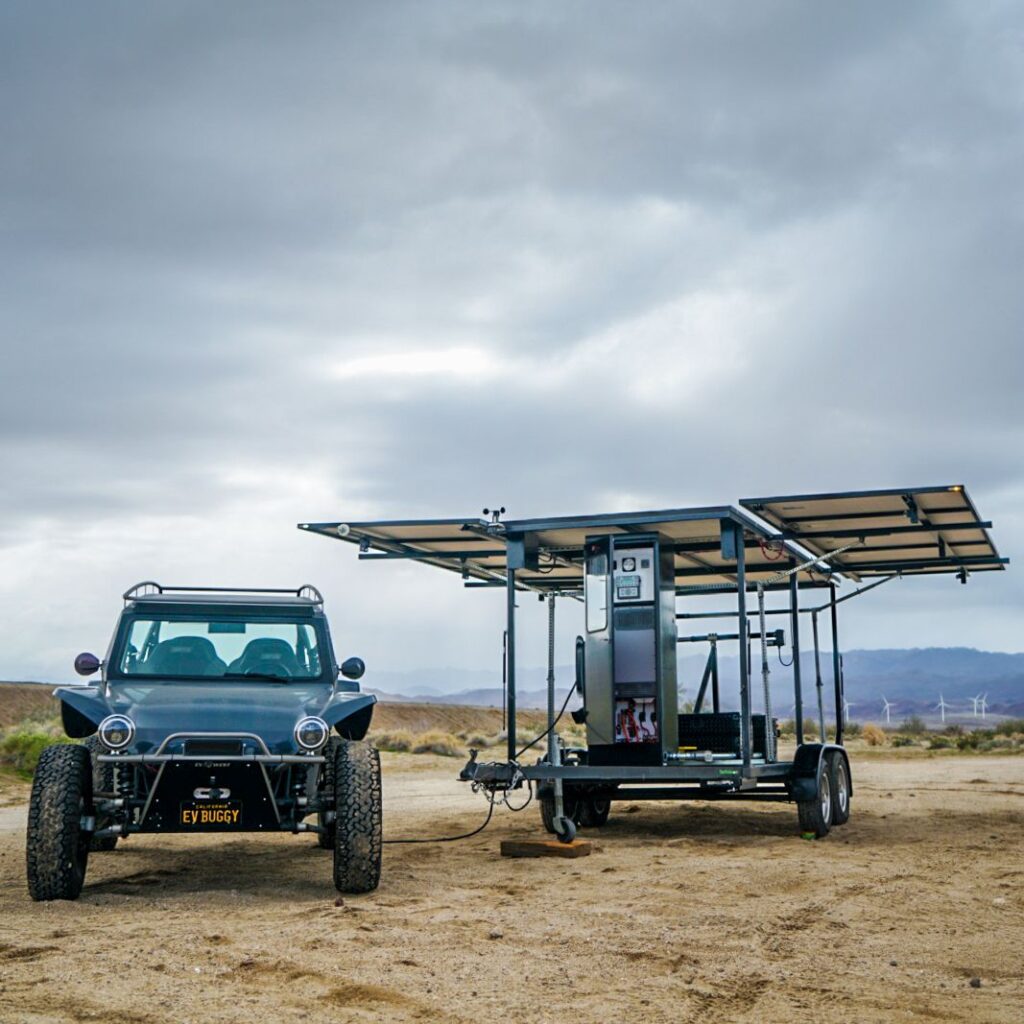By Lisa Cohn
Michael Bream’s customers generally don’t come in for gasoline-to-electric vehicle (EV) conversions for environmental reasons.
“A small business like this isn’t going to save the planet. That’s the job of GM, Toyota and Tesla,” says Bream, the CEO of EV West, San Diego. “We want to take care of automotive enthusiasts. We’re here to save the car–not the environment.”
However, the company’s work takes old gas guzzlers and converts them into zero-emission EVs. Not only does that wipe out the car’s emissions; it sometimes sparks a light bulb in customers’ minds and they begin looking into solar or other renewable energy systems.
EV West’s customers are owners of cars from the 1960s and 1970s–Volkswagens and pre-1987 Porsches, for example. The old cars often feature heavy steering and poor brakes, and lack the power to attain freeway speed.
Once these cars are converted to electric, they start driving like modern cars. They boast fast acceleration, power brakes and power steering, all of which boost safety. They can cruise 100-180 miles on a charge.
And even though the customers generally aren’t focused on the environmental effects of the conversions, Bream–who, at his shop, uses a solar charger to fill the electric cars with kWh–is happy that his work yields environmental positives.

A warm and fuzzy 10
On a warm and fuzzy scale, these conversions score a 10 out of 10, he says.
Bream, an engineer, arrived early to the EV scene. When he launched his company in 2009, sales were slow and he worried he had made a mistake.
“People were poo-pooing us. They didn’t understand what we were doing,” he says.
Some still poo-poo the idea–including a MotorTrend Magazine writer who argues, “if you just dig the technology and ‘instant torque’ of EV, then have at it, like any other offbeat hot-rodding project. But if you’re doing it to save money, you need to go take a math class.”
Michael Biron, an EV startup veteran and former director of service engineering for Arcimoto, which sells EVs, says these conversions mostly appeal to the wealthy.
“Usually you have the customer who comes in with a fat wallet. That person may pay up to $150,000 for a custom-made EV,” says Biron, who has built EVs for mines.
In spite of the costs of conversions, Bream’s business picked up in 2016, when he started fielding calls from people who wanted to convert their old Corvettes or Volkswagens to electric cars like their neighbors’ Teslas.
Since then, company growth has “rocketed,” he says.

The simplest conversion candidates
Volkswagens are the easiest vehicles to convert because they don’t have much inside, Bream says.
“There’s no air conditioning, no power steering, no power brakes. You start adding these extra things and replace the power train; it’s super simple.”
The cars gain performance, but they lack seat belts and other safety features. Those can be purchased from sellers outside the EV conversion shops. It’s best to keep the EVs simple, Biron says. Otherwise, as car owners add extra features, they will need to add more and more batteries, which ratchets up the cost.
A VW Beetle is the lowest entry point for conversions, says Bream.
“Let’s say you have a Beetle worth $20,000 and put another $40,000 into it. It increases the value,” he says.
Installing parts from EVs headed for the crusher
What goes into the VW beetle might be parts from a wrecked Tesla.
“We attend auctions and purchase cars that are headed for the crusher,” says Bream, He and his associates remove the electric motors, batteries and drive trains and send the rest of the wrecked EVs to recyclers.
And that’s one more positive that elicits warm and fuzzy feelings in Bream.
The peanut butter and chocolate moment
“When we take the worst cars on the street and replace them with a modern drive system and put them on the road, there’s a peanut butter and chocolate moment,” Bream says. The car no longer stinks and it can go fast. What’s more, owners never have to go to the gas station again. “They can charge at night and wake up with a tank of electrons.”
Even better, like Bream, they can charge with solar energy and boost the environmental benefits of going electric–even if that wasn’t their first intention.